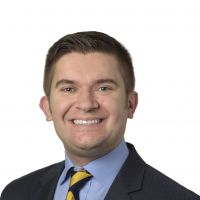Noninvasive Management of Ventilatory Pump Failure: How to Avoid Tracheotomy
This event has passed and can no longer be viewed
This event was presented live or live-streamed and has not been designated for on-demand presentation.
This H. Ben Taub Department of Physical Medicine & Rehabilitation Grand Rounds session will take place on March 20, 2024 at 7:00 a.m. Attendance for this grand rounds session will only be available remotely through Zoom.
Activity Information
Needs Statement
Physiatrists, fellows, residents, medical students, advanced practice providers, and healthcare professionals in related disciplines need to receive regular updates on research advances in physical medicine and rehabilitation. Because the field incorporates a wide range of inpatient and outpatient practices, regular updates on evidenced-based guidelines, technical innovations, and cost-effective care are also essential. The series aims to expand the knowledge of learners, disseminate best practices in rehabilitative care and pain management, enhance the quality of rehabilitative care, and improve patient outcomes while using resources efficiently.
Educational Objectives
At the conclusion of the session, the participants should be able to:
- Describe the difference between noninvasive ventilation and noninvasive ventilatory support.
- Discuss the quality-of-life and survival advantages of noninvasive respiratory management.
- Distinguish strategies and methods for central versus proximal airway clearance.
- Evaluate the application of an oximetry/CNVS/MIE protocol to maintain normal blood gases, prevent lung pathology, and avoid acute-on-chronic respiratory failure and the need for a ventilatory pump.
- Differentiate patients experiencing ventilatory pump failure from those with sleep disordered breathing or primary lung/airway diseases.
- Apply proper extubation/decannulation strategies for patients experiencing ventilatory pump failure, especially patients who cannot be weaned from ventilation support.
- Extrapolate survival strategies for patients of all ages who have experienced ventilatory pump failure without recourse to insertion of invasive airway tubes.
- Recognize the objective indications for tracheotomy and explain why patients with severe myopathic and/or lower motor neuron disease do not need it.
- Reduce respiratory complications during general anesthesia, especially for patients with limited vital capacity or ventilator-free breathing, without the need for tracheotomy.
Target Audience
Professional Categories
- Physicians
- Fellows
- Residents
- Nurses
- Other Health Professionals
Specialties
- Physical Medicine and Rehabilitation
Interest Groups
- Hospital Medicine
Accreditation/Credit Designation
Baylor College of Medicine is accredited by the Accreditation Council for Continuing Medical Education (ACCME) to provide continuing medical education for physicians.
Baylor College of Medicine designates this live activity for a maximum of 1.0 AMA PRA Category 1 Credit(s)™. Physicians should claim only the credit commensurate with the extent of their participation in the activity.
Activity Director
Disclosure Policy
Baylor College of Medicine (BCM) is accredited by the Accreditation Council for Continuing Medical Education (ACCME) to provide continuing medical education (CME) for physicians. BCM is committed to sponsoring CE activities that are scientifically based, accurate, current, and objectively presented.
In accordance with the ACCME Standards for Commercial Support, BCM has implemented a mechanism requiring everyone in a position to control the content of an educational activity (i.e., directors, planning committee members, faculty) to disclose any relevant financial relationships with commercial interests (drug/device companies) and manage/resolve any conflicts of interest prior to the activity. Individuals must disclose to participants the existence or non-existence of financial relationships at the time of the activity or within 24 months prior.
In addition, BCM has requested activity faculty/presenters to disclose to participants any unlabeled use or investigational use of pharmaceutical/device products; to use scientific or generic names (not trade names) in referring to products; and, if necessary to use a trade name, to use the names of similar products or those within a class. Faculty/presenters have also been requested to adhere to the ACCME's validation of clinical content statements.
BCM does not view the existence of financial relationships with commercial interests as implying bias or decreasing the value of a presentation. It is up to participants to determine whether the relationships influence the activity faculty with regard to exposition or conclusions. If at any time during this activity you feel that there has been commercial/promotional bias, notify the Activity Director or Activity Coordinator. Please answer the questions about balance and objectivity in the activity evaluation candidly.
All of the relevant financial relationships listed for these individuals have been mitigated.
Disclosures
The following individual(s) has/have reported financial or other relationship(s) with commercial entities whose products/services may relate to the educational content of this activity:
Presenter
-

John Bach, M.D.
Professor of Neurology; Medical Director, Center for Noninvasive Mech Ventilation
Rutgers Health, New Jersey Medical School
Disclosure:
Nothing to disclose.
Activity Director
Planning Committee Members
-
Marissa Catalanotto, M.D.
Physical Medicine and Rehabilitation Resident
Baylor College of Medicine
Disclosure:
Nothing to disclose.
-

Emanuel Narcis Husu, M.D.
Assistant Professor
Baylor College of Medicine
Disclosure:
Nothing to disclose.
-

-
Christian Vangeison, D.O.
Physical Medicine and Rehabilitation Resident
Baylor College of Medicine
Disclosure:
Nothing to disclose.
Health Topics
Presenter:

